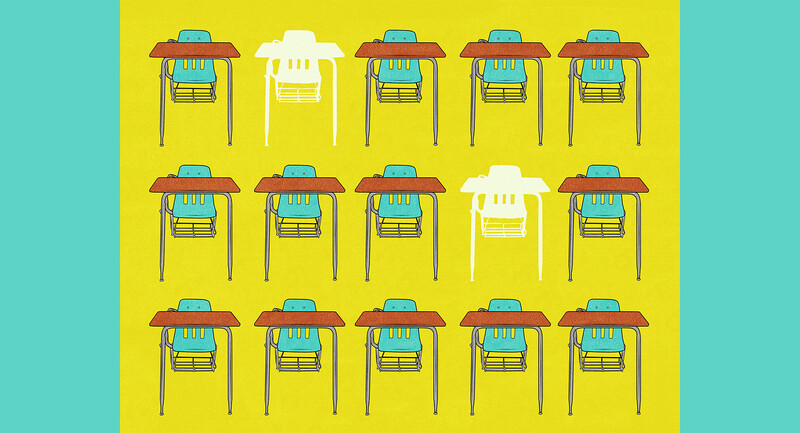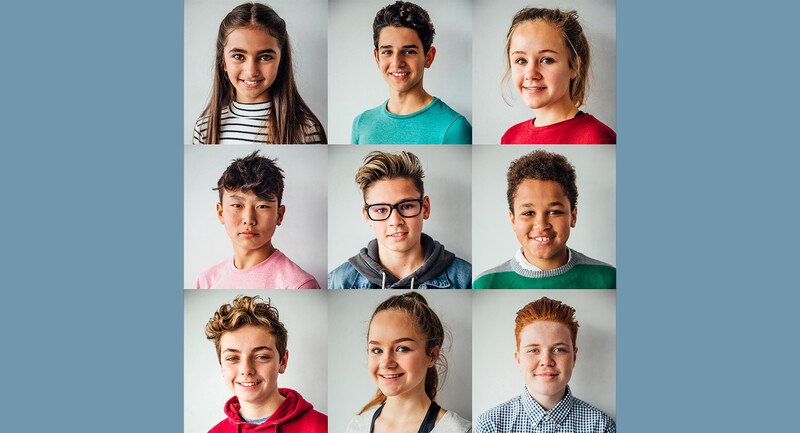Welcome to the Health Sciences High annual symposium! This event gives students an opportunity to share what they've learned in their internships throughout the year. In attendance are teachers, parents, community members, and the "preceptors" who have worked with the students.
The second floor of the school has been transformed into a mock hospital, complete with emergency rooms, labs, obstetrics/gynecology, physical therapy, and nursing services. Other areas of the school have become education centers to highlight the learning of the future teachers who have interned at local elementary schools. Students in the mental health internship pathway conduct a group counseling session. Other students provide security and food services for the event, demonstrating the skills they've learned in their internship placements. Outside, there's a fire station where fire technology interns demonstrate their skills with ladders, climbing the building, throwing hoses, and the like.
In the video that accompanies this column, you'll see scenes from the annual symposium and hear students and graduates talk about their internships. This event is just part of the career development model that the school uses to ensure that its highly diverse student population is globally ready and competitive in the world economy.
How Career Development Works
At Health Sciences High, 56 percent of the students are Latino(a), 21 percent are African or African American, 14 percent are white, and 9 percent are Asian/Pacific Islander. Approximately 16 percent of the students qualify for individualized education plans, more than 85 percent speak a language other than English at home, and nearly 70 percent live in poverty. The graduation rate over the past nine years is 98.5 percent; 87 percent of our students meet college entrance requirements, compared with 43 percent statewide.
The key to these results? Career development for all. All students in grades 9–12 have internships. Students are off campus one day a week, either in their internship or in a course related to their internship. The school consolidates teacher preparation time on this day instead of spreading it through the week. For example, 9th-grade students are in internships on Thursdays, so teachers who teach 9th grade English, mathematics, science, history, and electives have the entire day to plan and collaborate. The other four days, they teach all day with no planning period.
To a person, the teachers at Health Sciences say they're more productive on this schedule than they were when they had 55 minutes each day for planning and preparation. As one teacher said, "I used to squander a lot of my time when I had a prep every day. There wasn't enough time to dig into something. Now, I have the whole day to collaborate and plan."
Students' weekly internship experiences are coupled with academic classes, including community college courses. A typical graduate of our school completes 12–15 college units during high school, with classes such as public speaking, psychology, principals of patient care, nutrition, introduction to public health, and so on. In addition, students have the opportunity to complete industry-recognized certificate programs, such as
Registered Medical Assistant, a two-year program that includes EKG monitoring, phlebotomy, and patient care. Graduates typically work in doctors' offices or clinics.
Emergency Medical Technician, a two-semester program that focuses on basic life support. Graduates work on ambulances or in emergency departments.
Residential Services Specialist, a two-semester program that focuses on support for individuals with disabilities. Graduates typically work for independent living programs or respite care organizations.
These certificate programs are especially useful for students who aren't sure that they'll attend a university right out of high school or who will need to work while in college. However, all students are also enrolled in courses that lead to college readiness.
Year-by-Year Progress
Career development at Health Sciences High follows a clear progression.
Year 1—Career Exploration. Ninth grade students participate in internships one full day every other week. Each student completes a series of four hospital rotations each semester to gain an overview of the health care occupations, such as therapy, imaging, dietary, cardiology, transport, and nursing. These hands-on rotations help them discover their interests, abilities, career values, and needs. On the alternate week, 9th graders take two community college courses (for example, infection prevention and introduction to health careers) or training courses recommended through their internship placement.
Year 2—Career Planning, Preparation, and Application. Tenth graders participate in internships one full day every other week. Students who have chosen the health care pathway complete a series of four-week hospital rotations to gain more in-depth information about paths of interest, as well as additional skill building and mentoring. Students who have chosen to specialize in other fields—education, fire technology, mental health, and so on—are placed in internships that help them develop the basic skills of the job. On alternate weeks, 10th grade students take two community college courses (for example, anatomy and physiology, psychology, or nutrition).
Year 3—Career Practicum. Eleventh grade students participate in a planned program of worksite learning experiences relevant to their plan of study. At this grade level, students apply for and interview for their placements, and each placement lasts at least one semester. These supervised experiences are coordinated with an academic component.
Year 4—Career Internship. Twelfth graders participate in an extended internship during the school year for a minimum of eight hours a week, trained and supported by carefully selected preceptors, who are employees of the hospitals and clinics in town or other relevant institutions and who are trained in mentorship skills. In these supervised internships, students receive on-the-job training and real-world experience in the field. Depending on the specialty, students take a combination of general (for example, health care systems) and specialty (for example, phlebotomy) community college courses. By the end of the year, students have amassed an academic and career portfolio representing their college preparation coursework, internship themes, and personal field experiences. This portfolio, which outlines 1-year, 5-year, and 10-year career plans, is the basis for the student's senior exhibit and professional résumé.
Ready to Move Forward
Health Sciences High's career development model enables students to find relevance in their academic classes while gaining practical skills that will serve them well in their futures—whether in college, career, or both. To be global-ready graduates, students need exposure to the world of work and opportunities to change their minds as they consider their futures.
In the video, you'll hear students describe the many different internship experiences they've completed as they've searched for a role in society that fits their personality and dreams. Luckily, these students don't have to wait to find the right direction until they graduate from college with the wrong degree. They're ready now to take the steps that will enable them to reach their goals.
EL Magazine Show & Tell / December 2016 - January 2017








